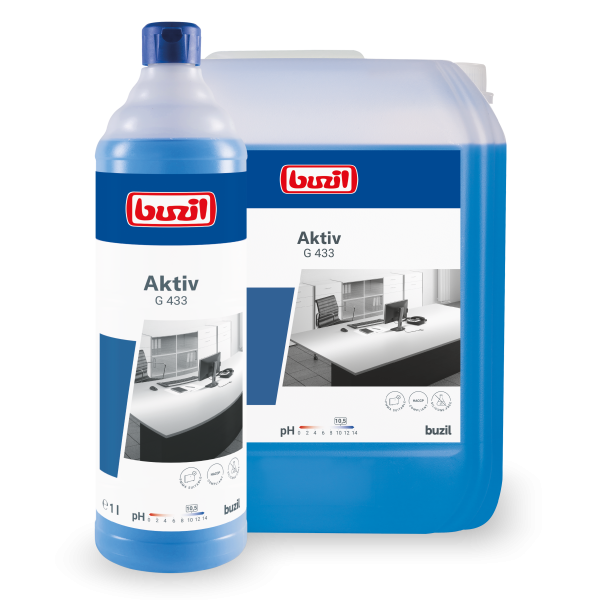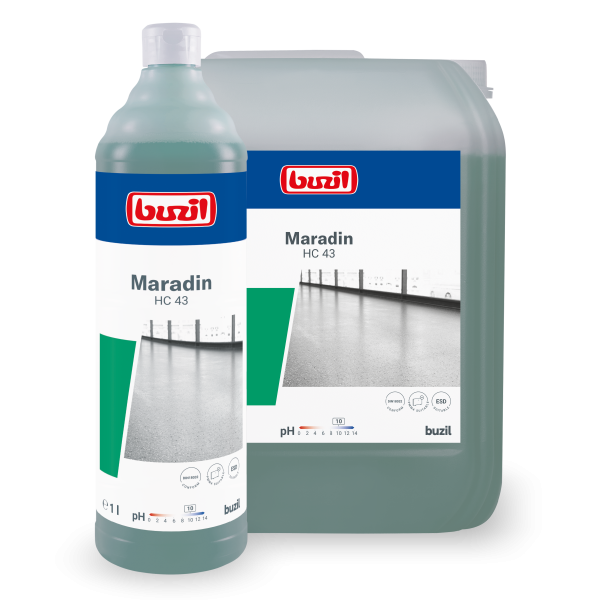Utilization
Soiling
-
Organic / inorganic contamination (grease, oil, protein, starch etc.)
-
Normal soiling (dust, beverage stains, insect stains, etc.)
Material compatibility
-
Interior glazing, mirrors
-
Resopal
-
Wood surface | sealed
-
Whiteboard
-
Chrome
-
Lacquered surface
-
Artificial leather
-
Plastics
-
Stainless steel
-
Table linoleum
-
Acrylic and plexiglass
Product Information
- Excellent cleaning effect for heavy dirt
- High dispersing properties for dust, grease and oil contamination
- Material-compatible
- Highly efficient due to economical dosing
- Meets the requirements within the framework of an HACCP concept
- Suitable for use in cleaning machines
Area of application
- all water-resistant surfaces, e.g. doors, window frames, radiators, plastic and glass surfaces
- Stone and synthetic floors
- suitable for acrylic glass (PMMA)
Application and dosage
- Always use cold water.
-
50 - 200 Millilitre / 10 liter Water
-
20 - 100 Millilitre / 10 liter Water
-
20 - 100 Millilitre / 10 liter Water
-
20 - 50 Millilitre / 10 liter Water
- Apply fresh application solutions and consume them within 24 hours at the latest.
Note
- When used in the machine, the tanks should be cleaned and rinsed regularly.
- Changes or variations in colour of the product do not impact on the quality. The product image may differ in colour and shape from the original.
Tips and tricks
Stripes and/or film on the surface, too much foam
Adjust product dosage; rinse thoroughly with clean water
Surface damage (discoloration, swelling of material, etc.)
check chemical and water compatibility
low / weak cleaning performance
Environmental Information
Proportion of easily degradable ingredients
99.2 %
Phosphorus content
0 mg/g
Palm oil-based raw materials - RSPO-certified share
82 %
The proportion of easily degradable ingredients refers to the proportion of organic ingredients that are defined as “easily biodegradable” according to OECD 301 or Detergent Regulation (EC) No. 648/2004. The value of the phosphorus content refers to elemental phosphorus. Palm oil is an important renewable source for the production of raw materials. The Roundtable on Sustainable Palm Oil (RSPO), founded in 2004, promotes sustainable cultivation methods for palm oil. This results in a certification system and the possibility of declaring raw materials as “RSPO-certified”.
Sales units
- G433-0010RA: 1 x 10 l canister
- G433-0001RA: 12 x 1 l bottle
- G433-0950RA: 1 x 950 l IBC container
Classification according to CLP
Danger marking
Warning
Hazard information
- H319: Causes serious eye irritation.
Safety instructions
- P305+P351+P338: IF IN EYES: Rinse cautiously with water for several minutes. Remove contact lenses, if present and easy to do. Continue rinsing.
- P337+P313: If eye irritation persists: Get medical advice/attention.
Download area
- Operating instructions
- Safety Data Sheets
- Technical Data Sheets
- Environmental Information



